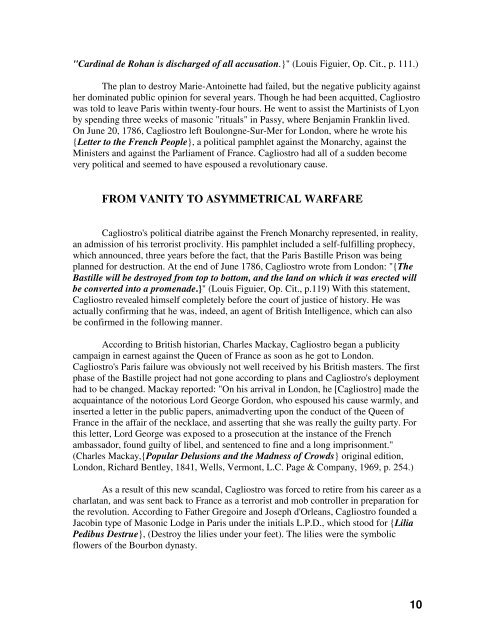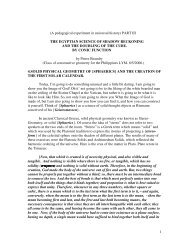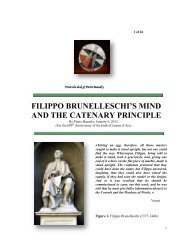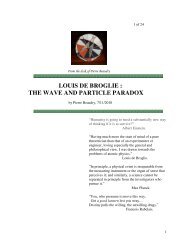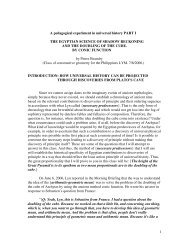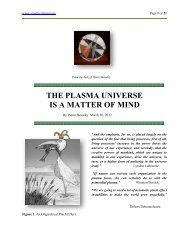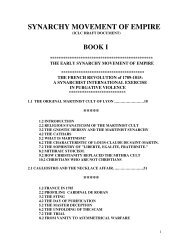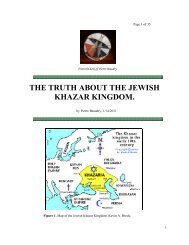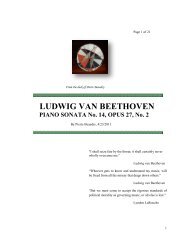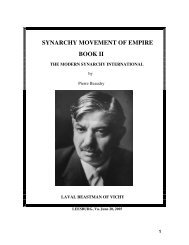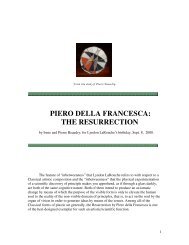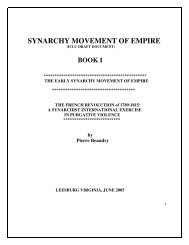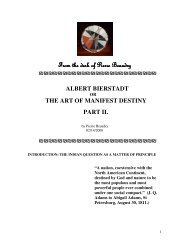CAGLIOSTRO AND THE NECKLACE AFFAIR
CAGLIOSTRO AND THE NECKLACE AFFAIR
CAGLIOSTRO AND THE NECKLACE AFFAIR
Create successful ePaper yourself
Turn your PDF publications into a flip-book with our unique Google optimized e-Paper software.
"Cardinal de Rohan is discharged of all accusation.}" (Louis Figuier, Op. Cit., p. 111.)The plan to destroy Marie-Antoinette had failed, but the negative publicity againsther dominated public opinion for several years. Though he had been acquitted, Cagliostrowas told to leave Paris within twenty-four hours. He went to assist the Martinists of Lyonby spending three weeks of masonic "rituals" in Passy, where Benjamin Franklin lived.On June 20, 1786, Cagliostro left Boulongne-Sur-Mer for London, where he wrote his{Letter to the French People}, a political pamphlet against the Monarchy, against theMinisters and against the Parliament of France. Cagliostro had all of a sudden becomevery political and seemed to have espoused a revolutionary cause.FROM VANITY TO ASYMMETRICAL WARFARECagliostro's political diatribe against the French Monarchy represented, in reality,an admission of his terrorist proclivity. His pamphlet included a self-fulfilling prophecy,which announced, three years before the fact, that the Paris Bastille Prison was beingplanned for destruction. At the end of June 1786, Cagliostro wrote from London: "{TheBastille will be destroyed from top to bottom, and the land on which it was erected willbe converted into a promenade.}" (Louis Figuier, Op. Cit., p.119) With this statement,Cagliostro revealed himself completely before the court of justice of history. He wasactually confirming that he was, indeed, an agent of British Intelligence, which can alsobe confirmed in the following manner.According to British historian, Charles Mackay, Cagliostro began a publicitycampaign in earnest against the Queen of France as soon as he got to London.Cagliostro's Paris failure was obviously not well received by his British masters. The firstphase of the Bastille project had not gone according to plans and Cagliostro's deploymenthad to be changed. Mackay reported: "On his arrival in London, he [Cagliostro] made theacquaintance of the notorious Lord George Gordon, who espoused his cause warmly, andinserted a letter in the public papers, animadverting upon the conduct of the Queen ofFrance in the affair of the necklace, and asserting that she was really the guilty party. Forthis letter, Lord George was exposed to a prosecution at the instance of the Frenchambassador, found guilty of libel, and sentenced to fine and a long imprisonment."(Charles Mackay,{Popular Delusions and the Madness of Crowds} original edition,London, Richard Bentley, 1841, Wells, Vermont, L.C. Page & Company, 1969, p. 254.)As a result of this new scandal, Cagliostro was forced to retire from his career as acharlatan, and was sent back to France as a terrorist and mob controller in preparation forthe revolution. According to Father Gregoire and Joseph d'Orleans, Cagliostro founded aJacobin type of Masonic Lodge in Paris under the initials L.P.D., which stood for {LiliaPedibus Destrue}, (Destroy the lilies under your feet). The lilies were the symbolicflowers of the Bourbon dynasty.10


